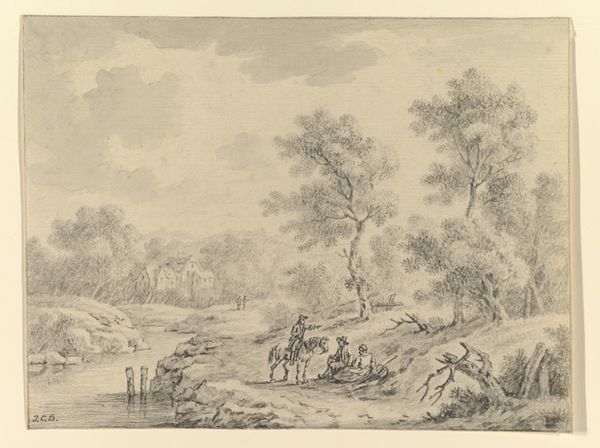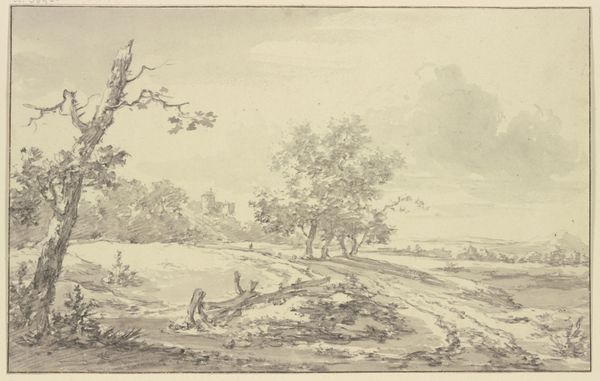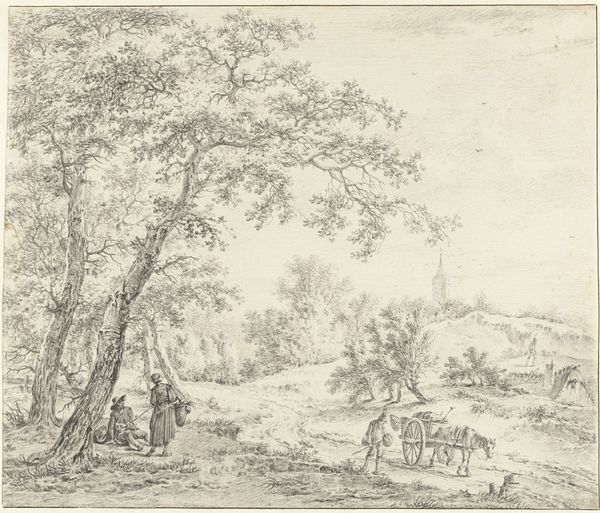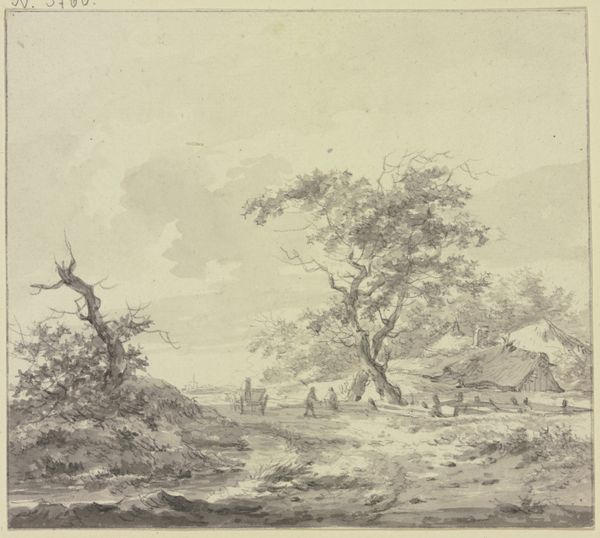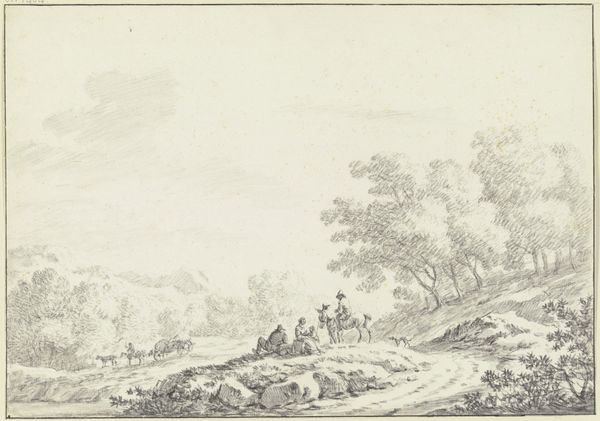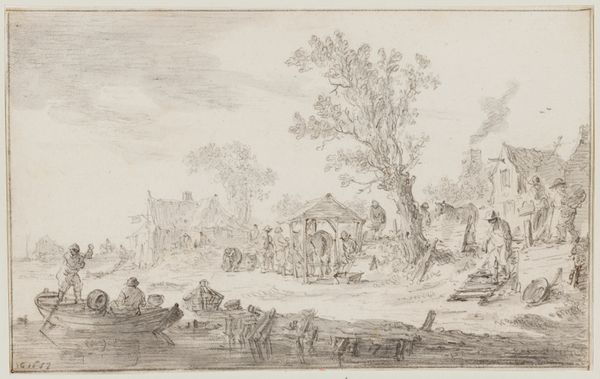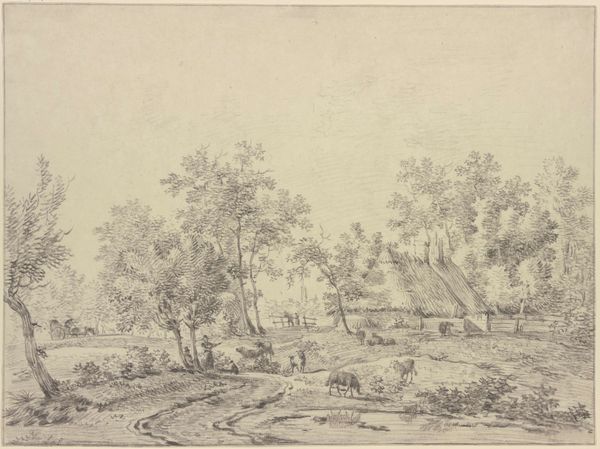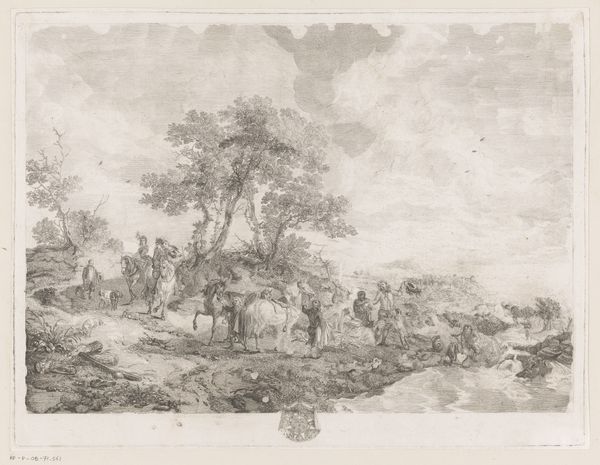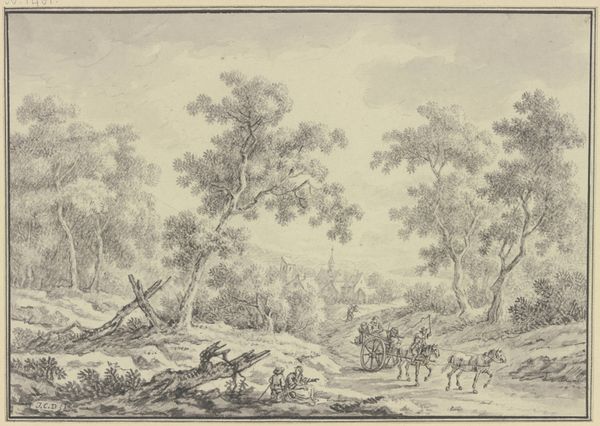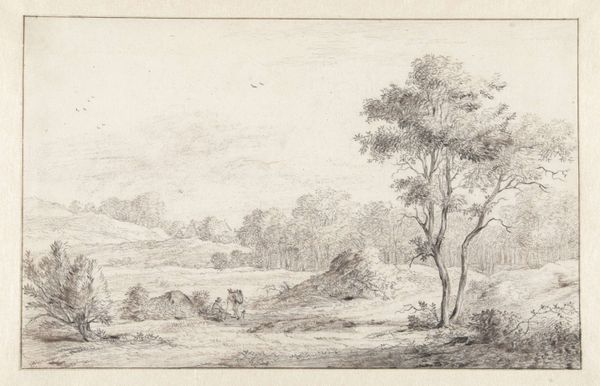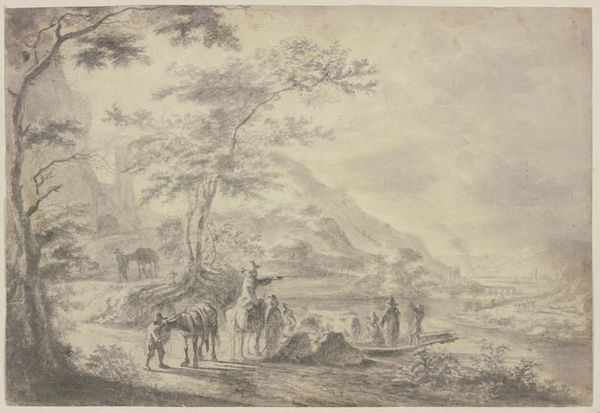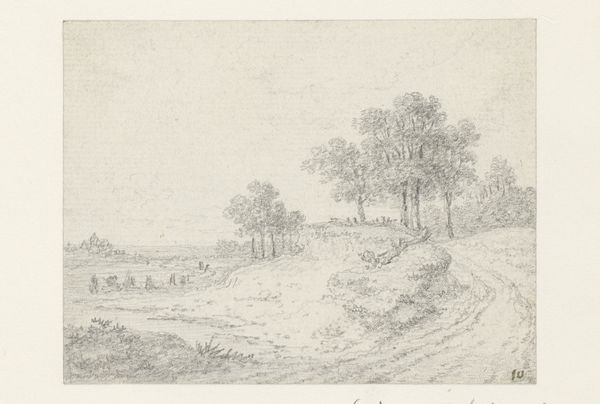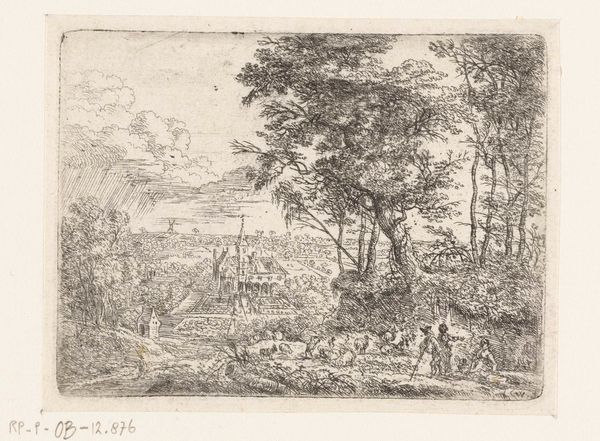
Landschaft mit Bäumen und Häusern, in der Mitte die Reste eines abgehauenen Baumes, Reiter und Fußgänger
0:00
0:00
drawing, graphite
#
drawing
#
baroque
#
landscape
#
figuration
#
graphite
#
14_17th-century
Copyright: Public Domain
Curator: Before us we have a landscape by Roelant Roghman, a drawing titled "Landscape with Trees and Houses, in the Center the Remains of a Felled Tree, Riders and Pedestrians." Editor: Immediately, I notice a sense of desolation. A melancholy mood seems to emanate from this rather grey rendering, especially centered around that dominating tree stump. It gives one pause. Curator: Roghman certainly captures a transient moment. The felled tree immediately foregrounds human impact on the land. We see the consumption of resources made literal. I am struck by the simplicity of the materials – just graphite on paper – to depict what surely was a complex act of labour and transportation of materials. Editor: Indeed. That felled tree seems like an altar to change, a poignant visual symbol of mortality amidst the stoic permanence of nature. And note the way he depicts those figures—the horsemen in particular are recurring figures of transit and hierarchy in Northern European art. I can't help but see a larger meditation on power, movement and transformation within what seems, on the surface, to be just another landscape drawing. Curator: Perhaps it's Roghman subtly commenting on the evolving economics of his time, the shifts in power relationships symbolized by that procession of figures and, importantly, the houses visible on the horizon beyond them. Editor: The houses are faint, almost fading, yes... Yet those stark human interventions resonate even stronger than that of a small hamlet on the horizon. One witnesses here not just visual art, but the beginning of industrial society changing the European view of its environment. The cut tree implies profound material shifts, far more lasting than simply needing a warm fire. Curator: Absolutely. Examining the mark-making closely, you begin to see the efficiency with which Roghman conveys textures - the bark of the standing trees, the rough-hewn surface of the stump. There's a real interest in the qualities of things themselves. He isn’t just documenting a scene. Editor: Looking once more at that tree... such stark presence it lends the entire piece. It almost haunts the entire work with themes of memory and regret. The graphite captures light in a particular way too, almost making a monument to its own passing... very intriguing piece! Curator: It really does bring to light the dynamic between humans and their natural surroundings in a quietly striking fashion, a contrast made even more apparent through his delicate application of medium. Editor: Yes, definitely a work of considerable artistic and historical density.
Comments
No comments
Be the first to comment and join the conversation on the ultimate creative platform.
